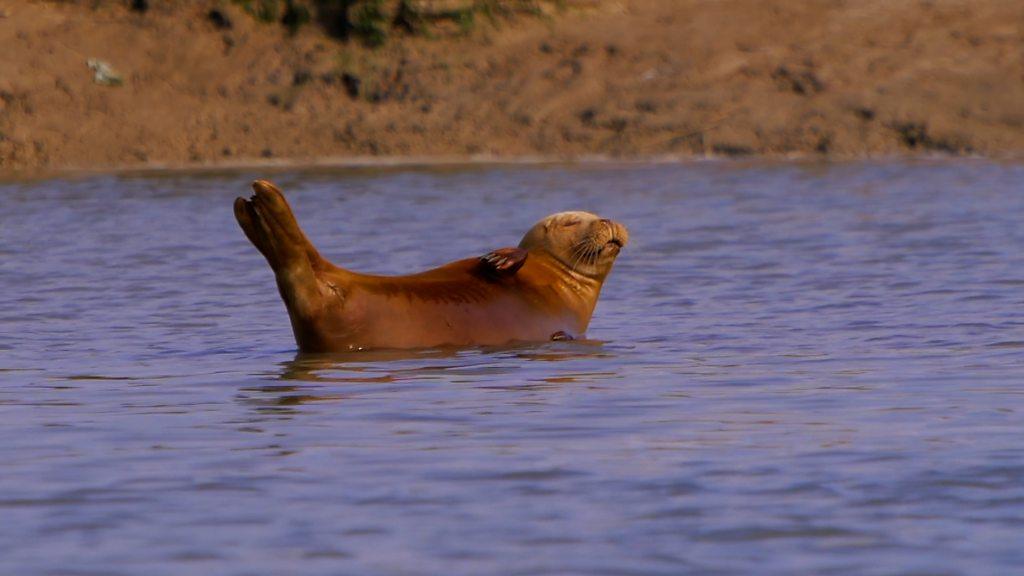Sharks are living in the River Thames, new study reveals
- Published
- comments
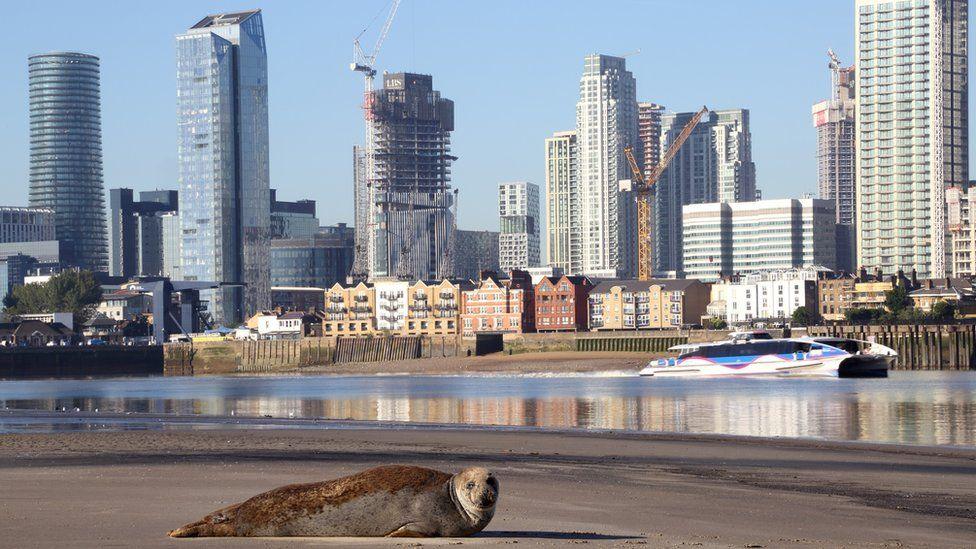
A number of species have been found living in the River Thames including sharks, seahorses, eels and seals
A number of species have been found living in the River Thames including sharks, seahorses, eels and seals, according to a new study.
Scientists from the Zoological Society of London (ZSL) carried out the analysis which is the most detailed study on the river there has been since the 1950s. It highlights changes since the river was declared "biologically dead" in 1957.
The report revealed shark species including tope, starry smooth hound and spurdog all currently live in the Thames, and there are more than 115 different species of fish in the 215-mile long river. The river has also seen an increase in its range of birds, marine mammals and natural habitats since the 1990s.
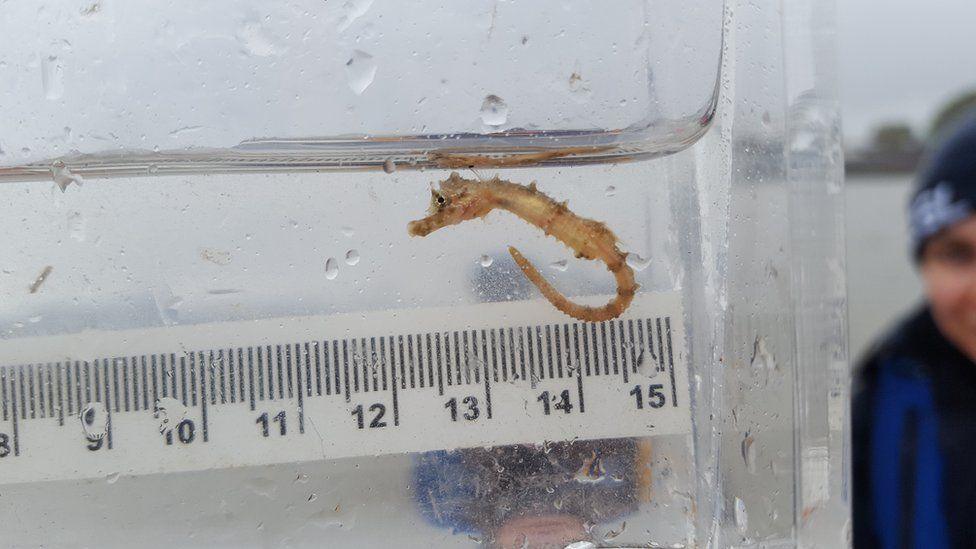
More than 115 different species of fish live in the 215-mile long river
However, the research also found that a number of fish species living in some areas of the Thames has slightly decreased. Scientists say more research is needed to work out why there has been a decline.
Climate change is also having an impact on the river. It has increased in temperature by 0.2 degrees a year, according to the study.
The temperature change also means water levels in the tidal Thames, which is the 95-mile stretch of the river affected by tides determining its levels and flow, have increased since 1911, the ZSL said.
An estuary is an area or body of water where a freshwater river or stream meets the ocean which contains seawater.
When freshwater and seawater mix, the water becomes slightly salty.
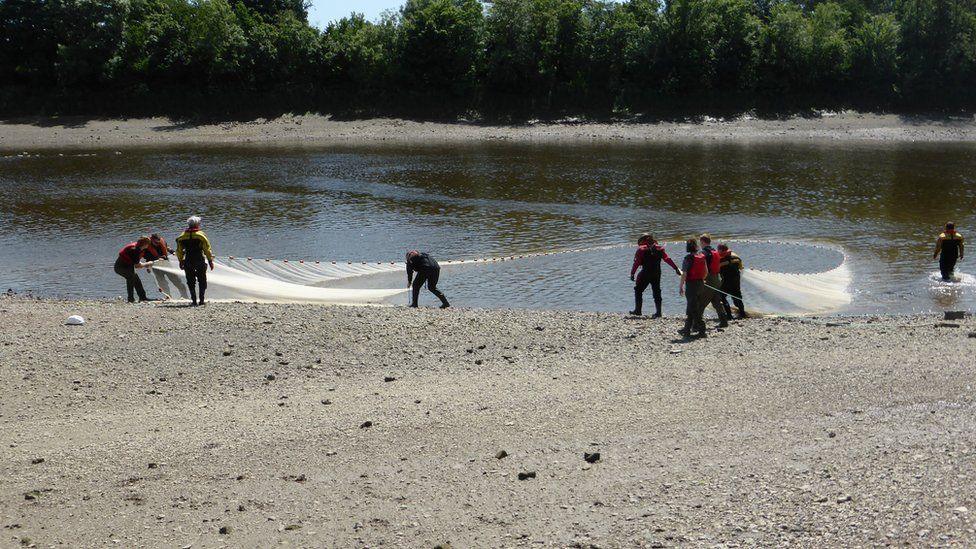
Climate change is affecting the river's sea levels according to the study
"Estuaries are one of our neglected and threatened ecosystems," said Alison Debney who is a Conservation Programme Manager at ZSL.
"They provide us with clean water, protection from flooding, and are an important nursery for fish and other wildlife."
Alison says The Thames Estuary is also important when it comes to fighting the effects of climate change and building a strong and resilient future for nature and people.
"This report has enabled us to really look at how far the Thames has come on its journey to recovery since it was declared biologically dead, and, in some cases, set baselines to build from in the future."
What else did the report find?
Take a look at London's brand new super sewer!
The report points to the need for the Thames Tideway Tunnel, which is also known as London's super sewer.
The 15-mile (24km) long, 200ft (61m) deep sewer, which will cost £4.2 billion to complete, will capture 39 million tonnes of untreated sewage currently flushed into the Thames each year.
"[The sewer] will have a significant impact on the water quality, making it a much healthier environment for wildlife to survive and flourish," said Liz Wood-Griffiths from Tideway.
ZSL also says it's working closely with partners to create new estuarine habitats, including seagrass and saltmarsh ones.
"Between them, these not only help to restore wildlife in the river, but also act as natural flood defences, and help to mitigate against extreme weather such as storms and floods," ZSL said.
- Published21 July 2020
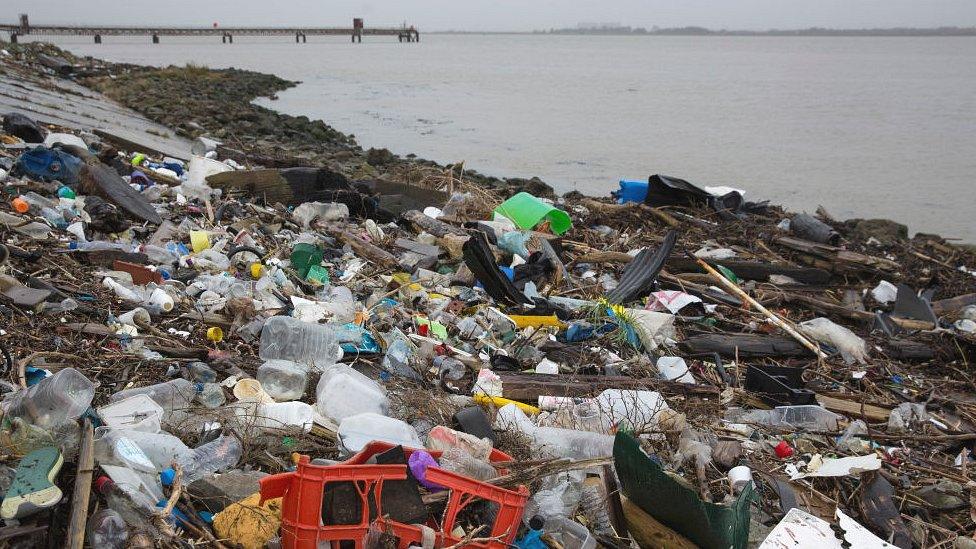
- Published21 October 2021

- Published11 September 2021
